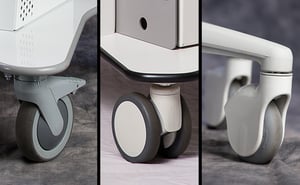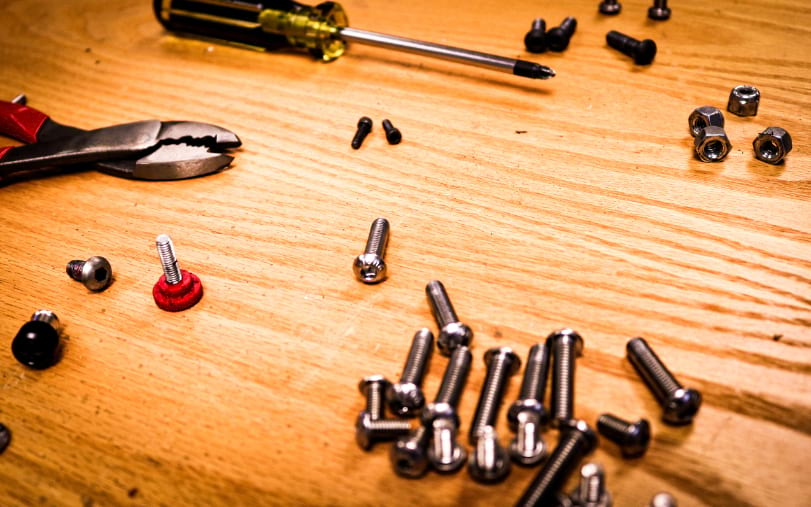We suggest designing for replacement parts, not placement carts. What we mean by this is individual parts are a lot less expensive to replace than a whole cart.
In general, medical carts are built to be reliable. Medical carts can be used in many different departments and locations with a wide variety of equipment on them. Some carts travel miles a day while others remain stationary or confined to a single room. They may have to be adjusted for every user, or one adjustment may suit the needs of all of the users. Either way, over time parts will wear. The parts that wear most frequently are the ones that move: casters, articulating arms, drawer slides, and height adjustable work surfaces.
Replacement Parts
When developing a medical cart, it’s important to keep in mind that over time parts of the cart will need to be replaced. First, we suggest designing for replacement parts, not replacement carts. Individual parts are a lot less expensive to replace than a whole cart. Most movable parts can be easily replaced. With the exception, casters for instance can be tougher to replace due to the cart style, weight of cart and or the amount of equipment riding on it. Something like a tool along the lines of a car jack can be designed to go with the cart to help with the lifting and replacing of the casters. Designing your cart to be able to replace parts with ease could save you time and money in the long run.
Maintenance
Cart issues and the need to replace parts will depend on overall cart maintenance. Plan to take care of your cart instead of get and forget. Have a schedule for routine cart maintenance and cleaning. Maintenance can go a long way and really increase your cart longevity. Most carts have to be cleaned regularly to be medical compliant. If you are using a liquid cleaner on the cart, make sure to wipe clean and remove all liquids. Certain cleaners, if left on the cart, over time can cause rusting. Some chemicals can also deteriorate the strength of some plastics. When it comes to carts with plastic housings and drawers, you really don’t want to compromise the strength of any plastic parts on the cart. Like we said earlier, casters can be replaced but they can also be cleaned. At this point it would be a judgment call. Being in a medical setting there is a lot of things that can be rolled up into casters. Casters clogged up over time will start to not function properly. Again depending on what is clogging the casters and how easy they are to clean, replacement may be the best option.
Cart User
Lastly, longevity of your cart can come right down to the user. For instance, if the staff using the carts are all relatively the same size, the carts will not have to be adjusted often. If carts must be adjusted every time it changes users, it is more likely that the height adjustment feature will need to be replaced sooner that later. Users can also affect cart longevity based on how they use the cart. We are mostly talking about user error in this instance. If the cart is being used in a way it's not designed form or the cart is being used outside its means, the cart can wear down or become damaged. A great suggestion would be to create a quick start guide for the cart. User error can be minimized with a quick start guide that is kept with the cart so users can be properly educated on the use and functionality of said cart.
Medical carts are typically built to be reliable. But it is inevitable your cart will wear down over time. Most times the cost to replace the entire cart is not an option, so designing your cart to have easily replaceable parts would be a great idea. Doing simple things like regular maintenance, cleaning, and part replacement as needed will drastically increase the life of your cart and keep in functioning the way it was designed to perform.
There are many things to consider when exploring what a custom medical cart will cost to design and manufacture. HUI has a lot of experience designing custom medical carts to a budget. If you’d like more information, or need help with your medical cart solution, contact us today.


